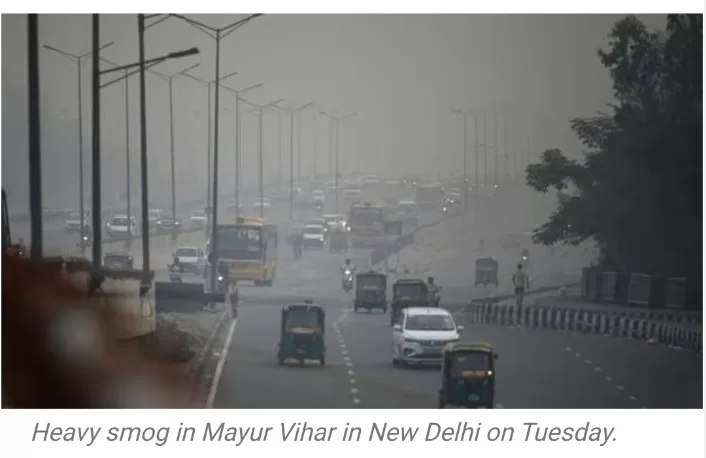New Delhi, While the national capital battles soaring levels of particulate matter (PM) 2.5 pollution, a new environmental challenge emerges as nitrogen dioxide (NO2) registers a concerning uptick in Delhi, according to data released by the Central Pollution Control Board (CPCB).
NO2, primarily stemming from vehicular emissions, underscores a persistent air quality predicament in Delhi that is closely tied to vehicular pollution. The city’s economic survey for 2022-23 reveals an astounding 7,917,898 registered vehicles in Delhi, with traffic extending from Gurugram, Faridabad in Haryana, and Noida and Ghaziabad in Uttar Pradesh, as per reports.
Pollution Hotspots:
Significantly, the ITO traffic intersection, one of Delhi’s busiest junctures, presently records the highest NO2 levels for November, averaging 191µg/m3, which is more than double the daily safe limit. Following closely is Nehru Nagar, with an average NO2 concentration of 123 micrograms per cubic meter, while Okhla Phase-2 reports an average NO2 concentration of 116µg/m3.
CPCB data points to a rapid elevation in Delhi’s average NO2 concentration during the first week of November, exacerbated by calm wind conditions since November 2. The average NO2 concentration in this period reached 54.7µg/m3, marking a substantial 47 percent increase from the previous month’s average of 37.3µg/m3. While the 24-hour concentration remains below the national standard of 80, the monthly average exceeds the World Health Organization’s (WHO) limit of 25µg/m3.
Health Implications:
Environmental experts caution that prolonged exposure to elevated NO2 levels is strongly associated with an increased risk of asthma and respiratory infections. Sunil Dahiya, an analyst at the Centre for Research on Energy and Clean Air (CREA), underscores the imperative need for sustained action at congested intersections where pollution levels surpass acceptable standards.
Dahiya stresses that NO2 levels are on the rise due to stagnant wind conditions, which hinder pollutant dispersion, causing an accumulation near the surface, particularly in traffic-congested areas. A similar trend was observed in October, with ITO recording an average NO2 concentration of 102µg/m3.
The Centre for Science and Environment (CSE) has noted a remarkable 60 percent surge in NO2 levels in Delhi when compared to the first week of October, underscoring the urgency for addressing vehicular pollution, especially in high-traffic regions. Anumita Roychowdhury, executive director of research and advocacy at CSE, underscores the vital need for local interventions aimed at efficient traffic management in pollution hotspots.







